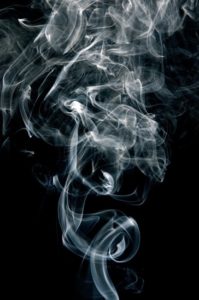Secondhand Smoke Linked to Sleep Apnea in Children
January 25, 2022
 Research shows between 50 to 70 million adults in the United States have sleep apnea. The most common type is caused by an obstruction in the upper airway, called obstructive sleep apnea. While many people believe the sleep disorder only affects adults, children aren’t immune to it. Children of all ages can experience frequent interruptions in breathing, which can affect their physical and mental health. While only 4% of children have sleep apnea, you might be unknowingly placing them at risk. Besides asthma and other health problems linked to secondhand smoke, new research shows it is also connected to childhood sleep apnea.
Research shows between 50 to 70 million adults in the United States have sleep apnea. The most common type is caused by an obstruction in the upper airway, called obstructive sleep apnea. While many people believe the sleep disorder only affects adults, children aren’t immune to it. Children of all ages can experience frequent interruptions in breathing, which can affect their physical and mental health. While only 4% of children have sleep apnea, you might be unknowingly placing them at risk. Besides asthma and other health problems linked to secondhand smoke, new research shows it is also connected to childhood sleep apnea.
Can Secondhand Smoke Cause Sleep Apnea?
An article published in the International Journal of Pediatric Otorhinolaryngology reported the results of a study evaluating the prevalence of sleep apnea in children exposed to smokers. 167 children were analyzed and separated into two groups: those exposed to secondhand smoke and those who weren’t. Researchers compared information between the two groups and found obstructive sleep apnea to occur more often in children who were regularly exposed to smoke.
The 90 participants who were around smokers had a 1.48 increase in odds of developing interruptions in breathing. Of the children analyzed, 46 had mild, 35 had moderate, and 70 had severe obstructive sleep apnea.
Risks of Untreated Childhood Sleep Apnea
Children with untreated sleep apnea are more likely to experience growth and cognitive delays, as well as heart problems. Unfortunately, the signs of sleep apnea in children can often be overlooked. Childhood symptoms can appear as:
- Chronic snoring
- Heavy breathing while sleeping
- Sleeping in unusual positions
- Restless sleep
- Bedwetting
- Behavior or learning problems
- Daytime sleepiness
- Sleepwalking or night terrors
Treating Sleep Apnea in Children
If your child is snoring and sleep apnea may be the cause, don’t ignore the signs, especially if you smoke. Their pediatrician may recommend a sleep study to determine if the disorder is present. If a diagnosis is confirmed, their pediatrician will create a personalized plan to help your child breathe better, such as using a CPAP or BPAP. The small machines deliver a gentle airstream through a mask worn over the mouth or nose to stop disruptions in breathing. An oral appliance can also be used to prevent an obstruction in the airway.
Besides getting the right treatment, it may be time to stop smoking. Not only will you improve your health, but you’ll also protect your child against the dangers of secondhand smoke. You can successfully kick the habit by creating a strategy to reduce and resist your cravings instead of quitting cold turkey. Every time you resist a craving, you and your child are one step closer to breathing better.
About Dr. Ivan Paskalev
Dr. Paskalev has practiced dentistry in 3 countries over his 20-year career. Besides earning his dental degree, he has also completed advanced training in sleep dentistry from OSA University. He is a member of various professional organizations because of his career excellence, including the American Academy of Dental Sleep Medicine. If your child needs treatment for sleep apnea, contact our office today for an appointment.

